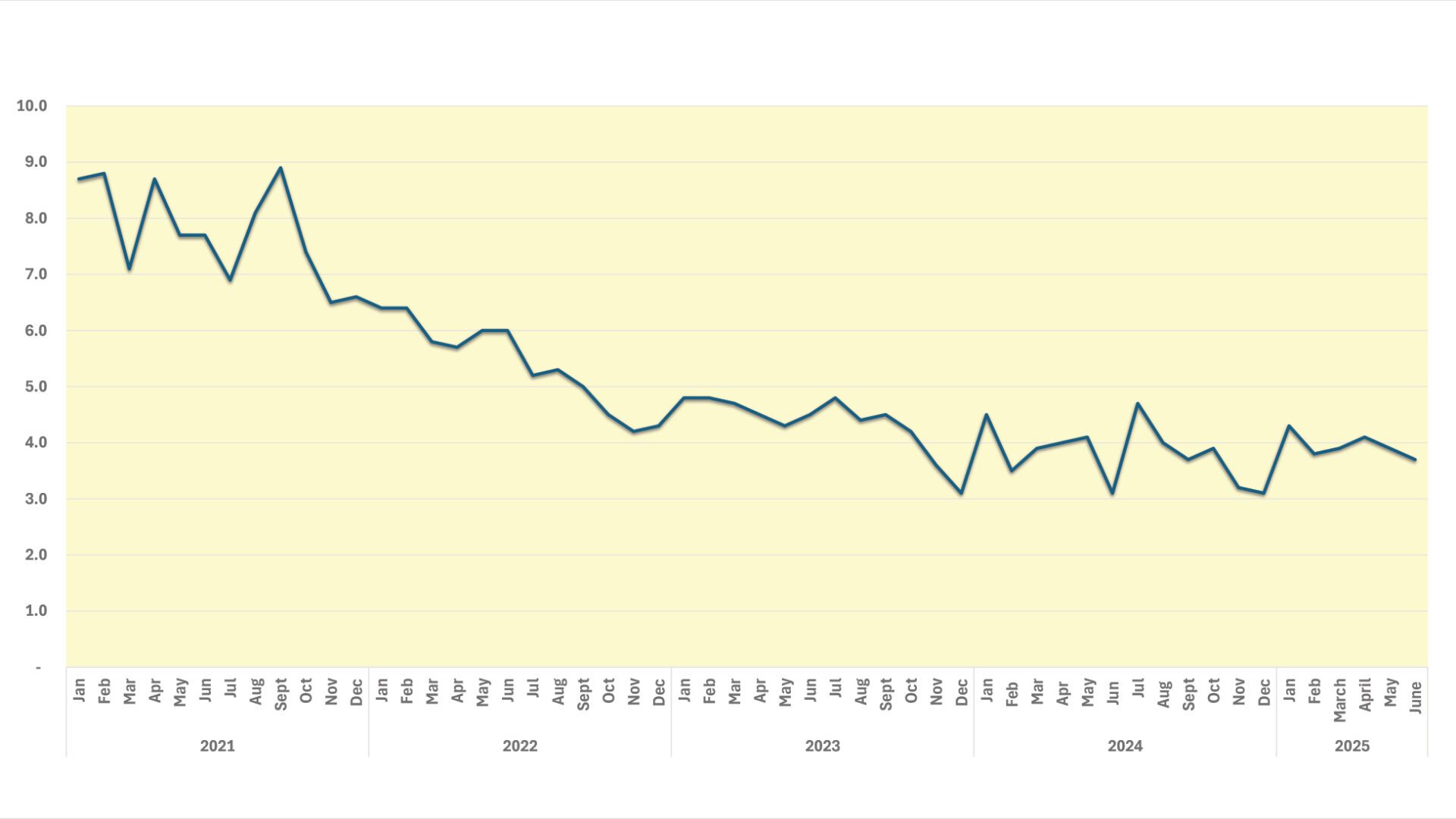Down from May but up from yr-earlier
The number of unemployed individuals in June 2025 grew to 1.95 million from a year earlier, translating to an unemployment rate of 3.7 percent, the Philippine Statistics Authority (PSA) said on Wednesday.
In May, the number of unemployed persons stood at 2.03 million — an unemployment rate of 3.9 percent, PSA data showed.
Comparative data in June 2024, however, showed the number of unemployed individuals at 1.62 million, which put the unemployment rate at 3.1 percent.
Employment rate down at 96.3%
Devina Gracia del Prado, PSA deputy statistician, said employable individuals in the country rose in number to 52.42 million in June 2025 from 51.9 million in June last year, and from 52.32 million in May this year.
Out of the employable persons, those employed are recorded at 50.47 million in June, up from 50.28 million a year earlier.
This brought the employment rate in the month under review to 96.3 percent, down from 96.9 percent a year earlier.
In May, employed workers totaled 50.29 million, with the employment rate recorded at 96.1 percent.
Labor force participation at 65.7%
The country’s labor force participation rate in June was recorded at 65.7 percent. slightly lower than the 66 percent in June 2024 and 65.8 percent in May 2025.
Del Prado also reported that people who consider themselves underemployed is recorded at 5.76 million for an underemployment of 11.4 percent. In June last year, the underemployment rate stood at 12.1 percent, while it was recorded at 13.1 percent in May this year.
Services still dominate
The services sector accounted for 61.4 percent of the employed workforce in June this year, with the agriculture accounting for 20.9 percent, and industry for 17.7 percent.
The subsectors with the largest increases in employment in June this year compared with June 2024 were fishing and aquaculture, wholesale and retail trade, financial and insurance activities, transportation and storage and human health and social work activities.
The subsectors that posted the highest decline in employed workforce, meanwhile, is in the construction, agriculture and forestry, manufacturing, arts, entertainment and recreation, and mining and quarrying.
The PSA said 63 percent of the employed were wage and salary earners, self-employed without employees account for 27.1 percent, while unpaid family workers is at 8 percent.
In June, the average weekly hours worked by an employed person was estimated at 40.5 hours. Of those employed, 67.7 percent worked 40 hours or more in a week.
The PSA said it collected the data over 18 days between June 9 and June 26, surveying 11,148 households.
Uneven labor recovery – analyst
Juan Paolo Rivera, research fellow at the Philippine Institute for Development Studies (PIDS), said the slight drop in unemployment in June from May “suggests some recovery in job creation, likely driven by seasonal upticks in services and agriculture.”
“However, the year-on-year comparison shows a worsening, with 330,000 more unemployed Filipinos than in June 2024, which reflects a still-challenging labor environment amid global and domestic headwinds,” he added.
Rivera noted that the easing of underemployment to 11.4 percent means fewer workers looked for additional hours or income.
“But the labor force participation rate slightly dipped, which could signal discouragement among some potential jobseekers,” he said.
“The sectoral data, where 6 in 10 jobs are in services, highlight the continued dominance of low-productivity, often informal work, while industry remains underweight at just 17.7 percent. The rise in unpaid workers and fall in wage workers is also a red flag on job quality, he said.
“Overall, we’re seeing a labor market that’s recovering unevenly as more people are employed, but many are still underutilized or in insecure work,” he added.





